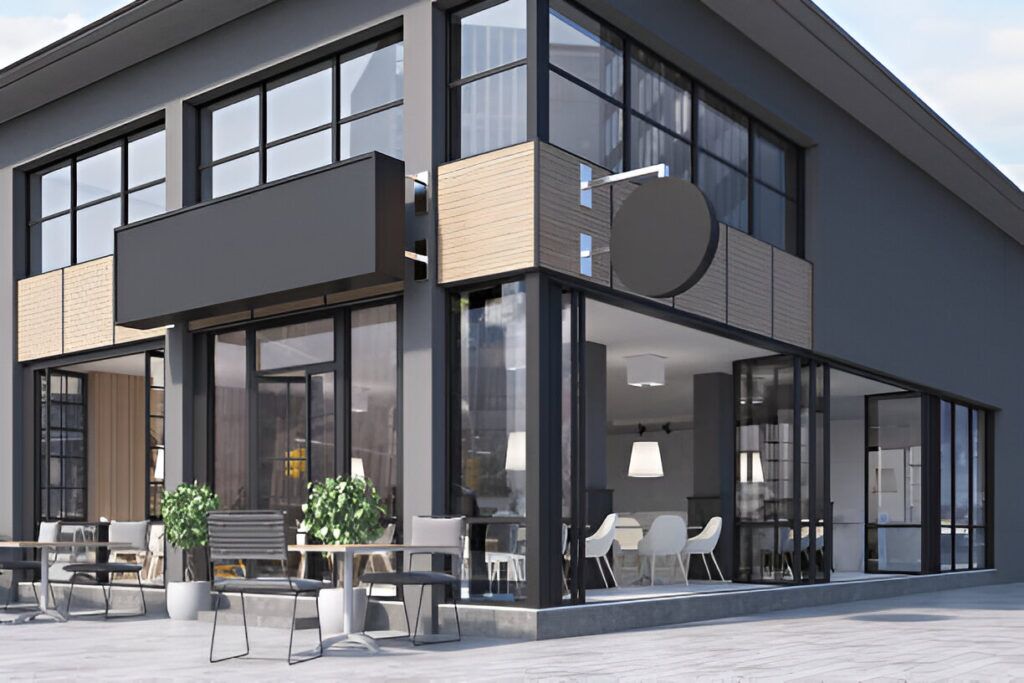Introduction
In the competitive world of restaurants, design changes can significantly impact customer experience and overall success. Visualising these changes is crucial for making informed decisions. This is where 3D renderings come into play, offering restaurant owners a clear and detailed view of proposed design modifications.
Understanding 3D Renderings
What is 3D Rendering?
3D rendering is the process of creating three-dimensional images from a digital model. These images can depict various aspects of a space, such as layout, lighting, textures, and colours. By using this technology, designers can create realistic visualisations of interior spaces. Read this blog for more information Creating Impactful Visuals for Your Architecture Presentations Using 3D Rendering Services
Different Types of 3D Renderings
There are various types of 3D renderings used in the restaurant industry, including photorealistic renderings, virtual tours, and augmented reality. Each type serves a unique purpose, from providing a lifelike representation of a space to offering interactive experiences.
Benefits of 3D Renderings in Restaurant Design
Enhanced Visualisation
One of the primary benefits of 3D renderings is enhanced visualisation. Restaurant owners can see exactly how design changes will look before any physical work begins. This helps in making more informed decisions and avoiding costly mistakes.
Accurate Representation of Space
3D renderings offer an accurate representation of the space. This precision ensures that every element, from furniture placement to lighting, is depicted realistically. Owners can better understand the spatial dynamics and make adjustments as needed.
Improved Decision-Making
With detailed visualisations, restaurant owners can improve their decision-making process. They can compare different design options side by side, consult with stakeholders, and choose the best design for their needs.
Case Studies: Real-World Examples
Example 1: Modern Bistro Redesign
A modern bistro planned to update its interiors to attract a younger crowd. Using 3D rendering services, the owners could visualise the new design, including contemporary furniture and vibrant colours. This helped them make confident decisions and achieve the desired look.
Example 2: Classic Diner Renovation
A classic diner wanted to retain its vintage charm while modernising its facilities. 3D renderings allowed the owners to experiment with various design elements, ensuring the final result balanced old and new aesthetics perfectly.
The Process of Creating 3D Renderings
Initial Consultation and Concept Development
The process begins with an initial consultation where designers understand the owner’s vision. This is followed by concept development, where ideas are sketched out and refined.
Designing and Drafting
Next, designers create detailed digital models of the restaurant. This stage involves drafting floor plans, selecting materials, and designing furniture layouts.
Finalising and Presenting Renderings
Finally, the renderings are finalised and presented to the owners. This stage may involve revisions to ensure the design aligns perfectly with the owner’s vision.
Tools and Software for 3D Rendering
Popular 3D Rendering Software
Several software options are popular in the industry, such as SketchUp, 3ds Max, and Blender. These tools offer various features to create high-quality renderings.
Choosing the Right Tool for Your Project
Choosing the right tool depends on the project’s specific needs. Factors such as budget, complexity, and desired outcomes play a role in selecting the appropriate software.
Collaborating with Designers and Architects
Effective Communication through 3D Renderings
3D renderings facilitate effective communication between restaurant owners, designers, and architects. These visual aids ensure everyone is on the same page, reducing misunderstandings and improving collaboration.
How Renderings Facilitate Better Collaboration
By providing a clear picture of the proposed changes, renderings help all parties involved to visualise the end result. This shared understanding leads to better collaboration and more successful outcomes.
Common Challenges and Solutions
Addressing Design Conflicts
Design conflicts can arise during any project. 3D renderings help identify these issues early on, allowing for timely adjustments and solutions.
Handling Budget Constraints
Budget constraints are a common challenge in restaurant design. With 3D renderings, owners can explore different design options and find cost-effective solutions without compromising on quality.
The Future of 3D Renderings in Restaurant Design
Emerging Trends
The future of 3D renderings in restaurant design is bright, with emerging trends like virtual reality and AI-driven design tools gaining popularity. These technologies promise even more realistic and interactive visualisations.
Technological Advancements
Technological advancements continue to enhance the capabilities of 3D renderings. Improved software, faster processing, and better integration with other design tools are making 3D renderings more accessible and efficient.
Conclusion
3D renderings play a crucial role in helping restaurant owners visualise design changes. They offer enhanced visualisation, accurate representation of space, and improved decision-making, making them an invaluable tool in the design process.
Frequently Asked Questions
1. What is 3D rendering in restaurant design?
3D rendering creates realistic images of proposed restaurant designs, helping visualise changes before implementation.
2. How long does it take to create a 3D rendering?
Typically, it takes from a few days to a couple of weeks, depending on the project’s complexity.
3. Are 3D renderings expensive?
Costs vary, but they are generally considered a worthwhile investment for their accuracy and decision-making benefits.
4. Can 3D renderings be updated if design changes are needed?
Yes, 3D renderings are flexible and can easily be updated to reflect design changes.
5. How do 3D renderings improve decision-making?
They provide a clear and detailed visualisation of design options, helping owners make informed decisions.
6. What software is commonly used for 3D renderings?
Popular software includes SketchUp, 3ds Max, and Blender.
7. Do 3D renderings help with budgeting?
Yes, they allow owners to explore different design options and find cost-effective solutions.
Alex Smith is a content writer at RealRender3D, writing informative articles on 3D rendering, interior design, architecture, and related topics.
With over 15 years of experience at top UK architecture and interior design firms, Alex leverages his expertise to write engaging content educating readers on AEC industry trends and best practices.
Connect with Alex at alex@realrender3d.co.uk.
